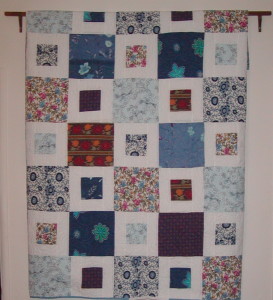 The experience and expression of grief is very individual. With the groundbreaking five stages of grief model Americans began to examine the process of grief, but it pigeonholed the grief process. The grief process is much more complex than the model. The model devised from observing terminally ill patients was mistakenly assigned to all grief. Not all grief is the same. Each of us exhibits grief differently.
The experience and expression of grief is very individual. With the groundbreaking five stages of grief model Americans began to examine the process of grief, but it pigeonholed the grief process. The grief process is much more complex than the model. The model devised from observing terminally ill patients was mistakenly assigned to all grief. Not all grief is the same. Each of us exhibits grief differently.
Some people need to talk out their grief. They may engage with support groups or therapists, talk with family members or friends. They feel their feelings and express their feelings. Therapists love this kind of person and have traditionally labeled this healthy grieving.
There are other types of grief processes just as valid as the expressive griever. Others need to do projects to work through their grief. Doing something busy and physical is a way to channel grief. This may be as monumental as creating a memorial garden or as simple as planting a flower in honor of the dearly departed. It may or may not involve words or tears. It is still healthy grieving.
Most of us do a combination of grieving – expressing feelings and busying ourselves with tasks to channel feelings. As a therapist I want to honor in this blog entry those who need projects to grieve. Following are examples of projects I have witnessed friends, family and clients do to grieve.
The quilt pictured is a collection of squares from my mother’s dresses. Relatives and friends of the family created this quilt for my father after my mother’s death as a way to hang onto memories without a closet full of her clothes. Our thought was it was something he could curl up with to stay warm while watching TV. He loves the quilt so much though, he wants to see it every day and put it on the wall rather than only use it during cold weather. The quilt idea has also been done with men’s ties.
The tasks to organize a funeral such as creating the program, writing the eulogy, designing a tombstone – all of these tasks as burdensome as they may initially feel help people begin the process of grieving. In shock many of us gravitate towards tasks to keep us busy. “Just give me something to do,” is a common request when a loved one has recently died.
GRIEF PROJECTS:
Get outdoors and connect to the natural world. Nature soothes. If there is a particular place favored by your loved one, visit it. Hike in the place. Or just sit.
Build something. A bench. A box. Challenge yourself to build something. Keeping your hands busy and completing the task will provide a sense of accomplishment. Some people have built benches or flagpoles or sundials for the yard in honor of the loved one. Others have created boxes to hold treasured mementos of their loved one.
When a rock collector died his wife created a mosaic tabletop from many of the rocks for her TV room. It was a way to feel close to him and honor his love of rocks even though she was not a lover of rocks. She kept a part of him in a way that was useful to her.
Organize family photos, record family stories. Create a web site, a scrapbook, or a blog.
The point is to find a task interesting enough to keep you engaged and symbolic of who or what you lost.
